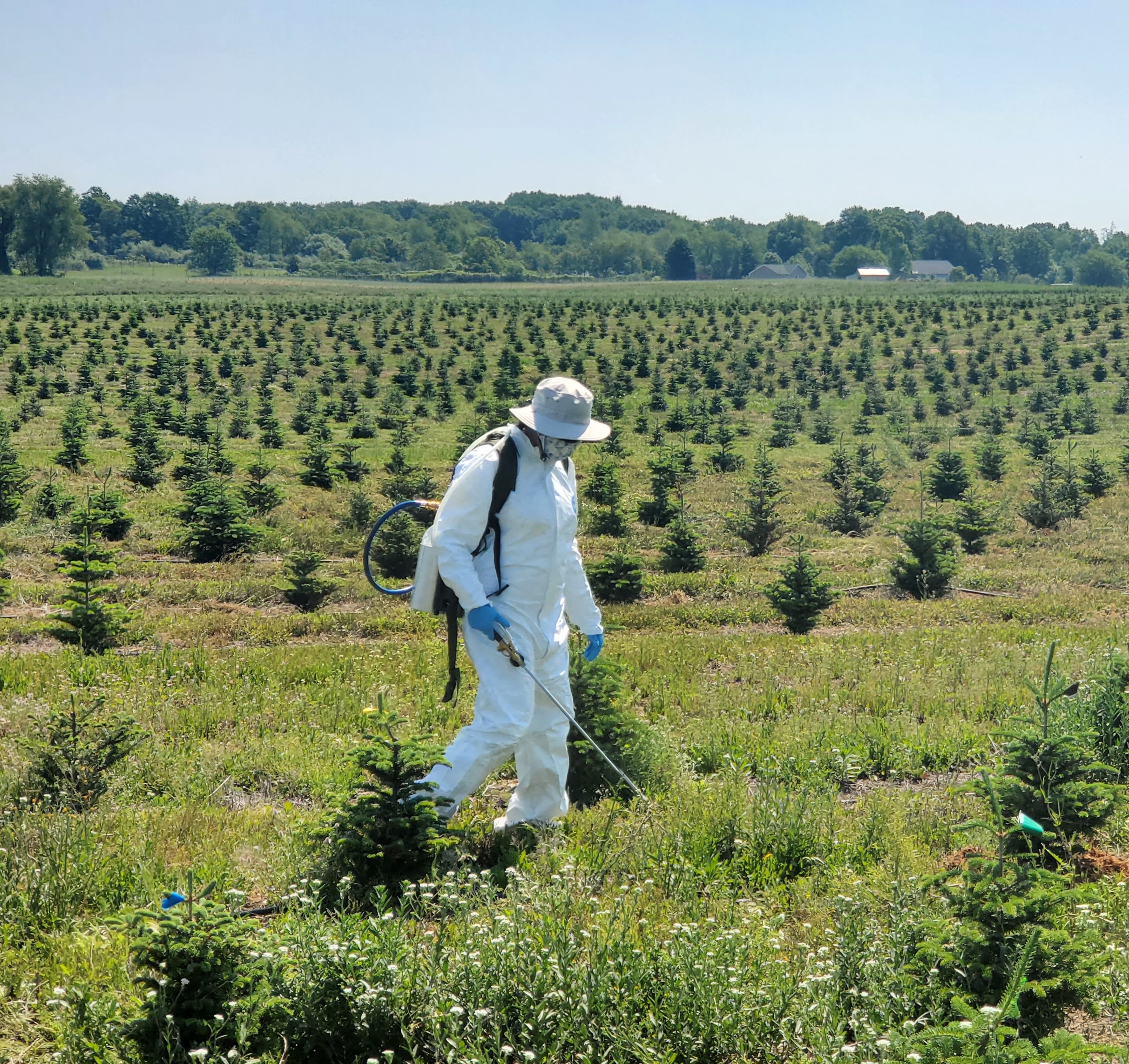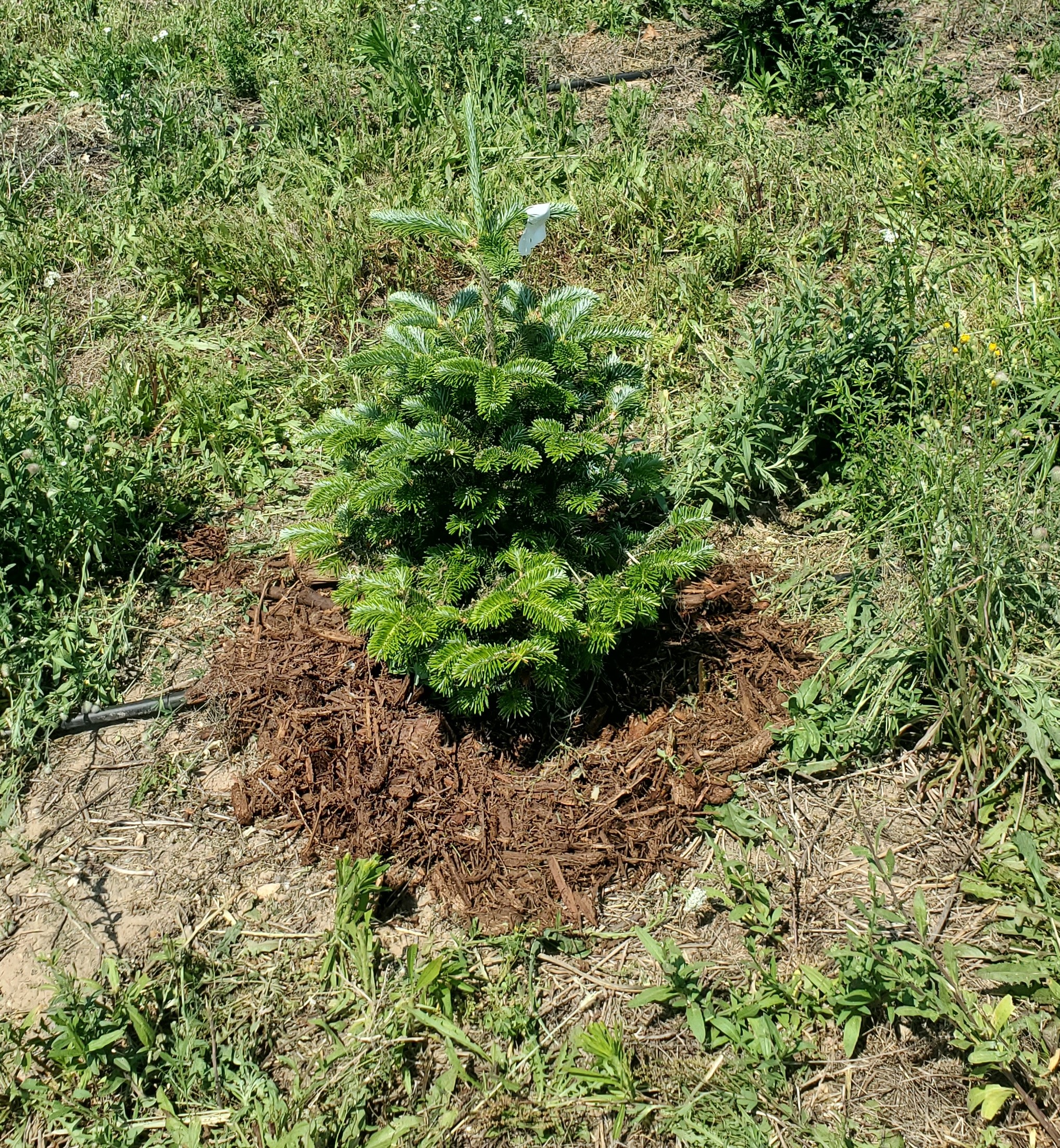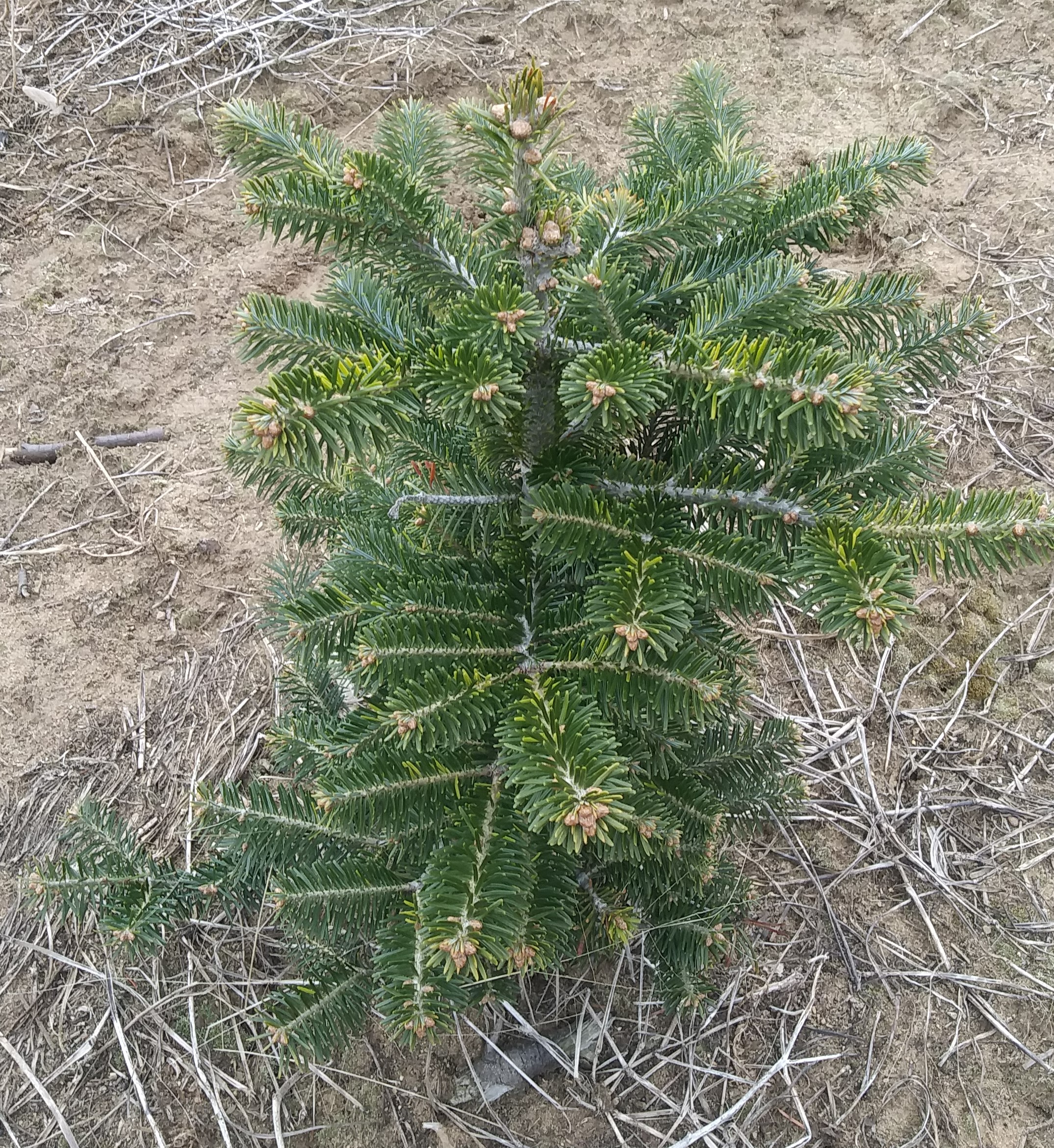Christmas trees 101: Weed management
Weed pressure can reduce seedling survivability and marketability of mature trees, directly impacting farm profitability.

Weeds compete directly with Christmas trees for water and nutrients and when not controlled can lead to poor tree establishment and survival (Photo 1). In mature tree plantings, high weed pressure can interfere with production practices such as pruning and spraying and can harbor pests and diseases. Weeds can also affect the appearance and marketability of trees, directly reducing profitability for growers.
There are many weed control strategies in Christmas trees, including but not limited to mowing or other physical removal, applying chemicals (i.e., herbicides, Photo 2), using a physical barrier, like a fabric liner or organic mulch (Photo 3), or planting and managing cover crops (Photo 4). Michigan State University Extension (MSU Extension) recommends implementing a combination of weed control strategies that best fit your farm to achieve adequate control.



Herbicides can be broken down into two categories based on how they function, either pre- or postemergence. Preemergence herbicides are applied to the soil prior to weeds germinating and can be expected to provide between six and eight weeks of residual weed control, depending on the product, weather conditions and weed pressure. Preemergence herbicides inhibit the growth/emergence of weed seedlings as the germinate.
To broaden your weed control effectiveness and to reduce the chance of resistant weeds, it is a good practice to tank mix and apply at least two herbicides with different modes of action. In general, most preemergence products should be applied prior to tree budbreak, but it is critical to review and follow all labeled instructions for maximum safety and effectiveness. Applications made in both the fall and spring can increase the duration of weed control.
Postemergence herbicides are applied to weeds that are already present. Some postemergence products move within the plant (i.e., translocate) from site of absorption to the root (e.g., glyphosate) and are known as systemic, while other products are non-systemic or contact herbicides, which target only the tissue directly contacted during application. In either case, it is important to realize that these products will not prevent new seedlings from emerging and may require repeated applications for continued weed control. Postemergence herbicides work best when applied to weeds that are young and actively growing and have not started flowering/seeding (reproductive stage).
Postemergence herbicides can cause crop injury (Photo 5), especially when they come in direct contact with active growing points of Christmas trees. Most postemergence products should be applied prior to bud break in the spring or after growth has hardened off in the fall. Some growers report tree injury when applications are made in the spring, even though there appears to be no active Christmas tree growth at the time of application. Although no active growth may be visible, buds can be active and swelling prior to observable growth and are vulnerable to injury at this stage. MSU Extension recommends reading and following label directions and minimizing direct spray contact with trees whenever possible.

Some growers are interested in organic weed control options. They can include mowing, physically removing weeds, using cover crops or using a barrier between the weeds and soil surface. Using mulch as a barrier can have added benefits for the soil health, increase water and nutrient holding capacity, moderate soil temperatures and improve transplant survival. These options can be effective but will likely require repeated applications with high labor costs.
Integrating two or more methods, such as combining herbicides with organic mulch or mowing, can improve weed control in Christmas tree production. An integrated approach not only improves weed management, but also mitigates chances of resistance development among weed species and impose less risk to the environment.
For more detailed herbicide weed control information and in-depth talks on various weed control strategies, view the 2022 winter Christmas tree webinar series from MSU Extension:



 Print
Print Email
Email

